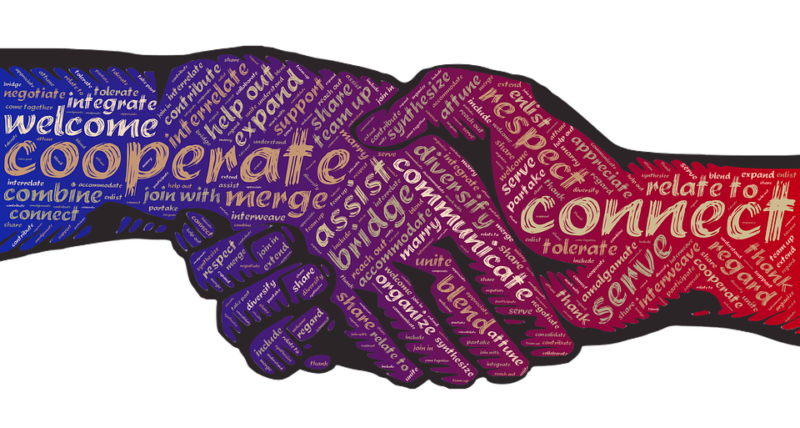The working year is a marathon of thrills, coffee spills, and tales of some successes and failures. The hardest part of any marathon is nearing the finish line where your muscles tend to ache the most. As a fan of Star Trek, I always loved Scotty the Engineer. For me, his most affable line was “She (referring to Starship Enterprise) can’nae take much more captain!” Most employees feel that way about working in an office during the summer months. They are desperate to get away to the beach, or as far away from the office as possible, or at the very least to the nearest deserted island!
Indeed, the hardest part of the working year is the summer months. Employees know they are at the halfway point of the year, right near the finish line. In the meantime, managers and CEOs are racking their brains to come up with the latest strategies to energize their teams.

Luckily,
for them, there are both original and creative ways to enhance employee
motivation. These ideas help leaders keep their staff energized throughout
another year.
It is as simple as 6-3-5
Imagine a typical office meeting. Your CEO or Manager decides to run the usual brainstorming meeting. Some team members raise their hands to suggest innovative ideas. Other members, who may have better ideas, remain silent. Joe Hirsh, Managing Director, at Semaca Partners says for a natural flow of creative ideas people need their own time and space to ignite their creative spark. Hirsh found that the 6-3-5 approach was very effective at generating a stream of ideas from a small group of people.
What is the 6-3-5 approach? The 6-3-5 approach is almost parallel to brainstorming—but without a conference room full of people. The 6-3-5 exercise only needs six participants. The rules are straightforward. First, give out blank cards to your group. Each participant has five minutes to write down three ideas. Using the stopwatch on your phone works great. After five minutes, each participant passes their ideas to the right, and the next person adds three more ideas to the card, repeat until the card gets back to the original person. The 6-3-5 method is like the old telephone game, only remade for creative brainstorming.

Brainwriting versus Brainstorming
Brainwriting is a similar approach to the 6-3-5 in that the process starts the same. Each participant is afforded the time and space to come up with creative ideas, then submits them. An example of this approach would be asking a small group from your marketing team to come up with a name or tagline for a new line of products. Team members jot their ideas on Post-It notes. Post-It notes are exchanged and each participant is asked to present new angles on the ideas listed. Exchanging continues until each participant has a chance to review and add their ideas.

Another training method called
skinny brainwriting is like the original (brainwriting), but with a few
differences. First, you hand out Post-It’s or cards, ideas are written down and
shared at random, only once. In this exercise, there are two rules. One there
is no guessing the owner of the idea and two, participants do not make hasty judgments.
After members have jotted down their ideas, the Post-It’s are stuck on a
whiteboard for review. Saving the ideas in the same online document for sharing
is an alternative way to review. In the course of this process, you will notice
emerging themes and patterns. This leads to a structured debate between team
members. This, in turn, leads to the whole team working together to form ideas.
Hirsh notes that without allowing time to think on their own,
idea sharing will not happen.
Creating a unique and inspiring work environment
Employee mood and motivation levels are very much related. That is because mood affects levels of energy and concentration. Research shows that work environments can affect mood. Ohio University and the National Institute of Mental Health investigated the stress levels of employees. One set of employees was working in older buildings with low ceilings and loud air conditioners. The other set worked in modern buildings with open layouts and with added natural light. Researchers found that the stress levels of workers in older buildings were higher.

Today’s business leaders understand the importance of the work
environment. Many modern offices now have kitchens and creation areas to let
employees unwind. One creative idea I love is from Enplug’s CEO, Nanxi Lui. Lui
and her team designed customized desks out
of basic hardware and reclaimed doors.
The team bonded and they saved money.
Check-ins: How to make sure you are listening
Understanding that employees are all different is the key to unlock their motivation. Today’s work environment is full of people with a variety of aspirations. In any workplace, it is common to find a multi-generation of employees. Employees also have a range of working styles that they prefer. Some employees have an autonomous style, whereas others need supervision. Many leaders use a one-size-fits-all strategy for motivation, which does not work for today’s modern diverse company.
So, what is the solution? The answer is simple
but powerful—learning how to listen more. Zoomshift co-founder, Jon Hainstoke,
promotes the idea of regular check-ins. The aim is to understand how and why
employees are feeling the way they do. Listening to employees increases their
trust in management. It also provides valuable insight for leaders on how to make
improvements. A tip for leaders: when asking about your
employees’ career goals, also ask them about their interests outside
of work.
How do you keep your employees energized throughout the year?
During the working year, we all experience peaks and valleys. Very few employees can keep a consistent performance throughout the whole year. As a leader, your role is to find out what makes your employees tick and use that as a motivator. Part of creating an engaging culture is ensuring you constantly introduce new strategies to promote collaboration and idea-sharing. At the same time, it is imperative to recognize that every employee has different motivations and goals. The most important priority to gain valuable insights into what drives the performance of your employees is to listen to them. It is mutually beneficial. It builds up their trust and enables you to evaluate and improve your organization.






